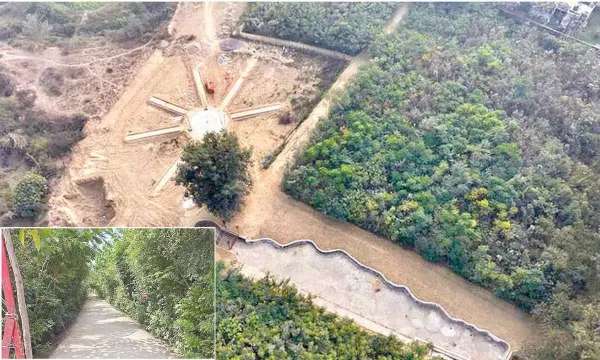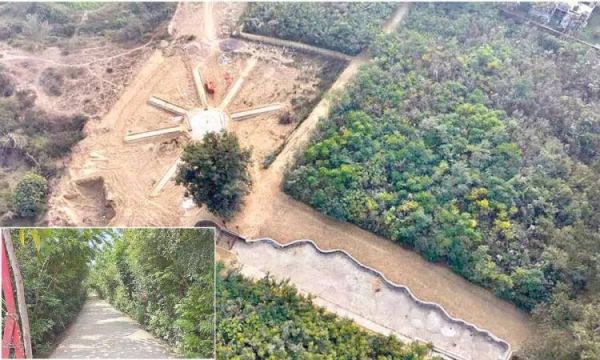
The Yogi Adityanath administration is taking major action in advance of the 2025 Mahakumbh to provide a pristine and green atmosphere for the millions of worshippers anticipated in Prayagraj. To guarantee clean air and a better climate, extensive trees have been planted across the city.

Several “oxygen banks” have been established during the last two years thanks to the Prayagraj Municipal Corporation’s adoption of the Japanese Miyawaki technology. This technique has turned arid areas into verdant woods that contribute significantly to environmental preservation and enhance the city’s air quality.
The “Greenery Guru,” Dr. NB Singh, a former professor of botany at Allahabad Central University, commended the Miyawaki approach as a remedy for pollution and warming brought on by urbanization. He pointed out that these thick woods increase biodiversity, reduce heat, and control temperature variations. By utilizing this strategy, trees may develop quickly and reduce temperatures by up to 7°C, improving the environment and providing comfort during the hot summer months.
Using the Miyawaki approach, more than 1.2 lakh seedlings have been planted during the last two years in more than ten places, occupying 55,800 square meters. Notably, 1.2 lakh seedlings have been planted in the Naini Industrial Area, which was once a landfill of industrial waste, resulting in a swift metamorphosis. Assistant Engineer Girish Singh emphasized the speedy outcomes of this method by stating, “Saplings planted here a year ago have already grown to 10-12 feet.” The Miyawaki method entails enriching the soil with organic fertilizers and planting three to four seedlings per square meter. The Buswar waste disposal site has been cleaned up and turned into a lush forest, in addition to the Naini region. 27,000 saplings of different kinds were planted across 9,000 square meters, greatly enhancing the air quality and getting rid of unpleasant smells.
Thirteen areas across the city are among the other significant locations where Miyawaki woods have been established, significantly enhancing the environment. Numerous species, including tamarind, neem, peepal, and mango, as well as therapeutic herbs like tulsi and brahmi, may be found in the woodlands. This variety guarantees long-term sustainability in addition to enhancing the aesthetic and environmental value.
By planting trees near to one another, the Miyawaki technique—created by Japanese botanist Akira Miyawaki in the 1970s—increases the pace at which forests expand. In urban settings, where space is scarce and rapid environmental restoration is crucial, this approach has shown promise. Compared to trees planted using conventional techniques, trees planted with this technology grow ten times quicker, absorbing more carbon and sustaining a higher level of biodiversity.
The program is an essential component of the city’s environmental plan as it is assisting in the management of industrial waste, pollution reduction, and ecological balance restoration. These lush trees will provide tourists a much-needed break as Prayagraj gets ready for the Mahakumbh 2025, providing healthier surroundings and better air.
“This initiative is not just about planting trees but about transforming the city’s environment and ensuring a better future for its residents and visitors,” said Chandra Mohan Garg, commissioner of the Prayagraj Municipal Corporation.